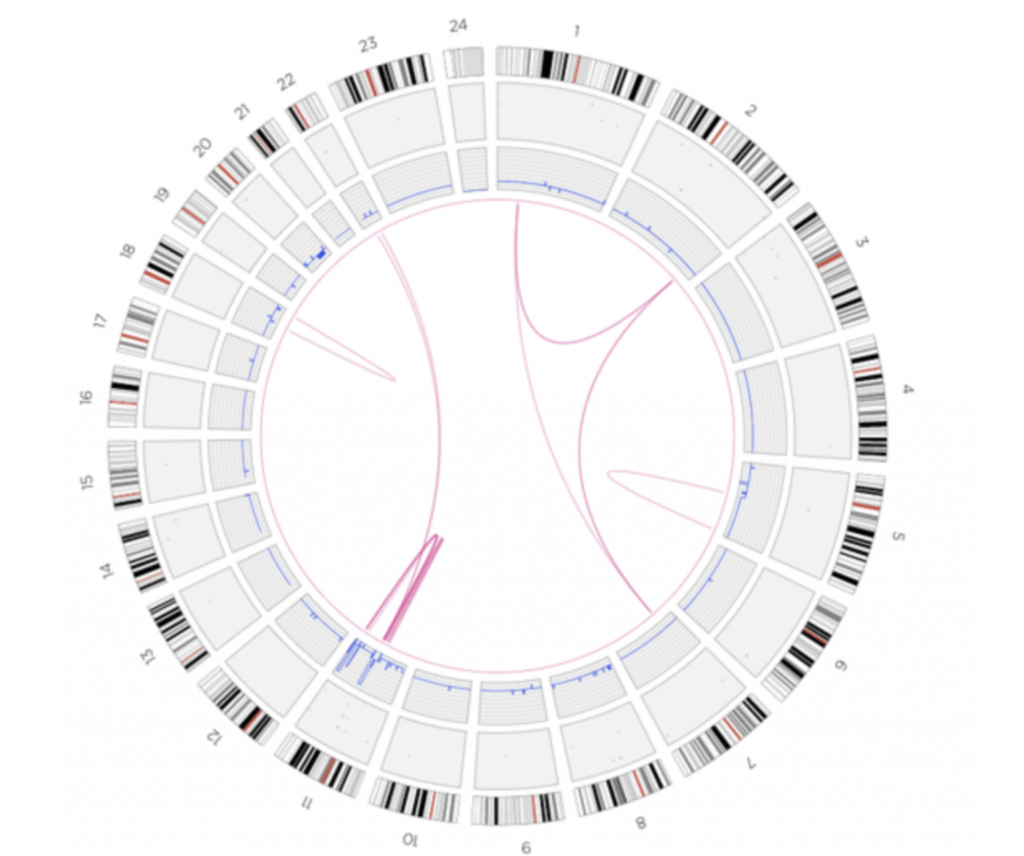Comparison of Phased Sequencing and Optical Mapping with Short-Read Whole Genome Sequencing for the Detection of Structural Variants in Chemotherapy-Refractory AML

By Dr. Matt Christopher
Traditionally, AML patients at high risk to progress after chemotherapy are identified as having complex chromosomal changes by Giemsa banding. This technique, however, fails to identify the majority of chemotherapy-refractory patients. Given the low resolution of this technique, it is possible that many chemotherapy-refractory cases contain occult structural variations that could be detected using more sensitive next-generation sequencing approaches.
In this project, Dr. Christopher and his team tested whether optical mapping performed using the Bionano Saphyr platform (Bionano Genomics) could detect occult structural variants missed by standard karyotype analysis in AML patients who were refractory to chemotherapy. Samples were identified from three patients with normal karyotype and two positive controls with abnormal karyotype. High molecular weight DNA was extracted from cryopreserved samples and run on Bionano Saphyr. Potential structural variants were filtered against a catalogue of known structural variants observed in healthy individuals to generate a list of presumed acquired structural variants. Nine of the sixteen structural variants found in these cases by karyotype analysis were detected by Bionano, and a large number of additional variants were found both in the normal karyotype and in complex karyotype controls. Future experiments will be necessary to validate these variants and prove that they are not found in the germline.
Currently Dr. Christopher in collaboration with colleagues in the Division of Oncology are testing whether whole genome sequencing can identify karyotypically occult structural variation in chemotherapy refractory cases. This testing includes whether a traditional WGS approach can identify AML patients with occult SNVs who may not respond well to standard chemotherapy.

